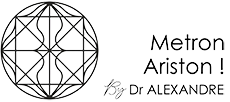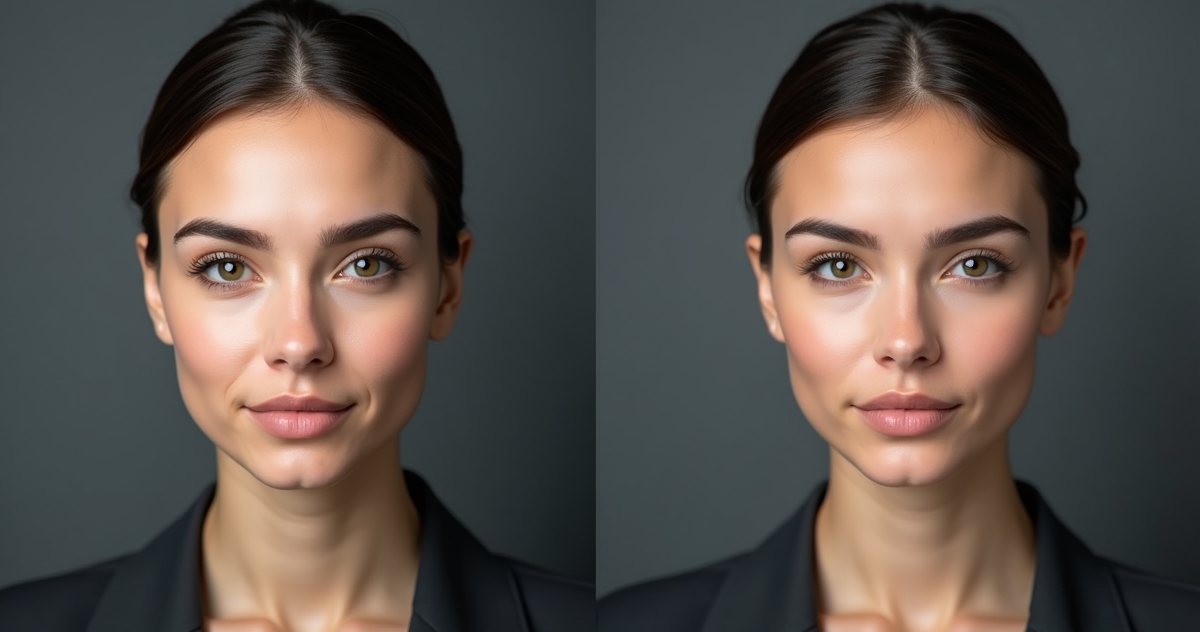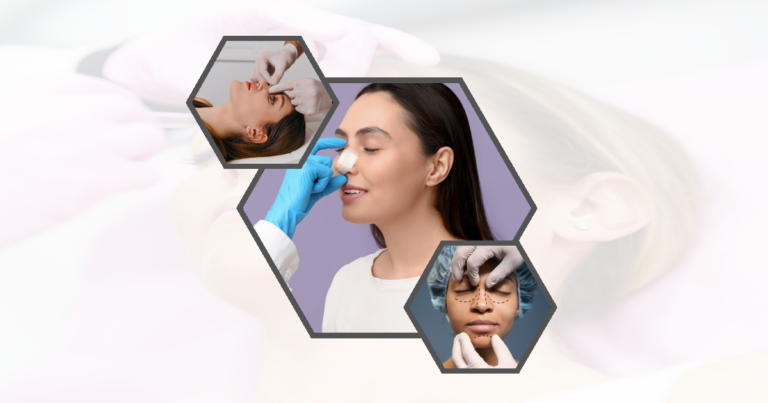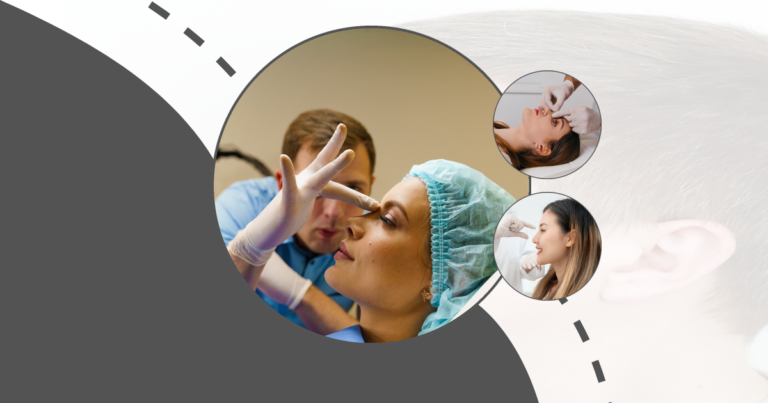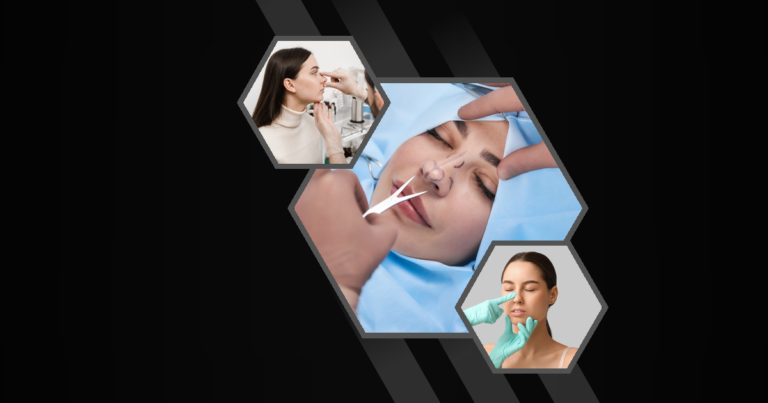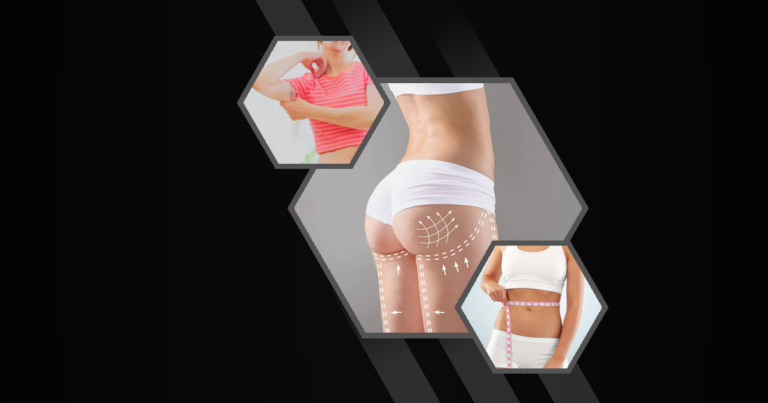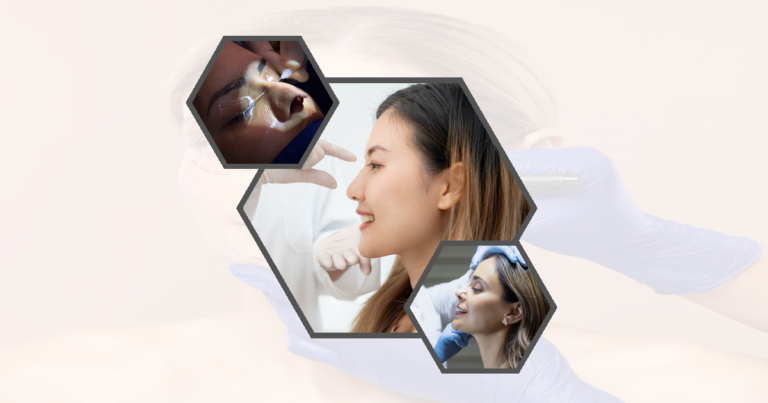What You Should Know Before and After Rhinoplasty
Rhinoplasty, commonly known as a nose job, is a popular cosmetic procedure that can enhance facial harmony and boost self-confidence. However, before deciding to undergo this surgery, it’s crucial to understand the entire process, from preparation to recovery.
This comprehensive guide will walk you through everything you need to know before and after rhinoplasty.
Understanding Rhinoplasty Basics
Rhinoplasty is a surgical procedure designed to reshape the nose for aesthetic or functional purposes. It can address issues such as a crooked nose, bumps, or breathing difficulties. The primary goal is to create a nose that complements the patient’s facial features while improving nasal function.
Nose Transformation Results
Nose Transformation Results show how your nose looks different after surgery or makeup changes people can see the before and after pictures to understand how the nose shape has changed
- Enhances facial symmetry
- Corrects structural defects
- Improves breathing
Candidates for Nose Surgery
Not everyone is an ideal candidate for rhinoplasty. Suitable candidates are typically individuals who are physically healthy, have realistic expectations, and are seeking improvement rather than perfection. It’s essential to consult with a qualified surgeon to determine if rhinoplasty is right for you.
- Physically healthy individuals
- Realistic expectations
- Seeking improvement, not perfection
Different Surgical Approaches
Rhinoplasty can be performed using various techniques, including open and closed approaches. The open approach involves a small incision on the columella, while the closed approach involves incisions within the nostrils. The choice of technique depends on the complexity of the surgery and the surgeon’s expertise.
- Open rhinoplasty: incision on the columella
- Closed rhinoplasty: incisions within the nostrils
- The choice depends on complexity and the surgeon’s expertise
Preparing for Your Rhinoplasty Procedure
Consultation with Dr. Alexandre
A thorough consultation with Dr. Alexandre is the first step in preparing for rhinoplasty. During this meeting, you’ll discuss your goals, medical history, and any concerns you may have. Dr. Alexandre will evaluate your nose and facial structure to create a personalized surgical plan.
- Discuss goals and medical history
- Address concerns and questions
- Personalized surgical plan
Medical Evaluations and Tests
Before undergoing rhinoplasty, you’ll need to undergo several medical evaluations and tests. These may include blood tests, imaging studies, and a physical examination to ensure you’re in good health for surgery. These evaluations help minimize risks and ensure a smooth procedure.
- Blood tests and imaging studies
- Physical examination
- Ensures good health for surgery
Lifestyle Adjustments Before Surgery
Certain lifestyle adjustments are necessary before rhinoplasty to promote optimal healing. You may need to stop smoking, avoid certain medications, and maintain a healthy diet. These changes can significantly impact the success of your surgery and recovery.
- Stop smoking
- Avoid certain medications
- Maintain a healthy diet
The Rhinoplasty Surgery Process
Anesthesia Options
Rhinoplasty is typically performed under general anesthesia, ensuring you are comfortable and pain-free during the procedure. In some cases, local anesthesia with sedation may be used. Your surgeon will discuss the best option for you based on your medical history and preferences.
- General anesthesia: common choice
- Local anesthesia with sedation: alternative option
- Discussed based on medical history
Surgical Techniques Used
The surgical techniques used in rhinoplasty vary depending on the desired outcome. Techniques may include reshaping the nasal bones, cartilage, or soft tissues. Your surgeon will choose the most appropriate methods to achieve your aesthetic goals.
- Reshaping nasal bones and cartilage
- Adjusting soft tissues
- Tailored to aesthetic goals
Duration of the Procedure
The duration of rhinoplasty surgery can vary, typically lasting between one to three hours. The complexity of the procedure and the specific techniques used will influence the time required. Your surgeon will provide an estimated timeline during your consultation.
- Typically lasts 1-3 hours
- Depends on complexity and techniques
- Estimated timeline provided by surgeon
Recovery and Aftercare Following Rhinoplasty
Immediate Post-Operative Care
After rhinoplasty, immediate post-operative care is crucial for a smooth recovery. You’ll need to rest with your head elevated, avoid strenuous activities, and follow your surgeon’s instructions carefully. Proper care can help reduce swelling and promote healing.
- Rest with head elevated
- Avoid strenuous activities
- Follow surgeon’s instructions
Managing Swelling and Bruising
Swelling and bruising are common after rhinoplasty, but they can be managed with proper care. Applying cold compresses, keeping your head elevated, and taking prescribed medications can help reduce these symptoms. Most swelling and bruising will subside within a few weeks.
- Apply cold compresses
- Keep head elevated
- Take prescribed medications
Timeline for Returning to Normal Activities
The timeline for returning to normal activities varies for each patient. Most individuals can resume light activities within a week, but strenuous exercise should be avoided for at least six weeks. Your surgeon will provide specific guidelines based on your progress.
- Light activities: within a week
- Strenuous exercise: avoid for six weeks
- Specific guidelines from surgeon
Potential Risks and Complications of Nose Surgery
Common Side Effects
Like any surgery, rhinoplasty comes with potential side effects. Common side effects include swelling, bruising, and temporary numbness. These are typically mild and resolve on their own within a few weeks.
- Swelling and bruising
- Temporary numbness
- Mild and resolve within weeks
Rare but Serious Complications
While rare, serious complications can occur after rhinoplasty. These may include infection, bleeding, or adverse reactions to anesthesia. It’s important to discuss these risks with your surgeon and follow all post-operative instructions to minimize them.
- Infection and bleeding
- Adverse reactions to anesthesia
- Discuss risks with surgeon
How to Minimize Risks
To minimize risks associated with rhinoplasty, choose a qualified and experienced surgeon, follow pre- and post-operative instructions, and attend all follow-up appointments. These steps can significantly reduce the likelihood of complications.
- Choose a qualified surgeon
- Follow instructions carefully
- Attend follow-up appointments
Expected Results and Longevity of Rhinoplasty
Timeline for Visible Improvements
Visible improvements from rhinoplasty can be seen within a few weeks, but final results may take up to a year to fully manifest. Patience is key, as the healing process varies for each individual.
- Visible improvements: within weeks
- Final results: up to a year
- Healing process varies
Long-Term Outcomes
Rhinoplasty results are generally long-lasting, with many patients enjoying their new appearance for years. However, factors such as aging and lifestyle choices can affect the longevity of the results.
- Long-lasting results
- Affected by aging and lifestyle
- Enjoyed for years
Factors Affecting Result Durability
Several factors can influence the durability of rhinoplasty results, including skin thickness, age, and lifestyle habits. Maintaining a healthy lifestyle and protecting your skin from sun damage can help preserve your results.
- Skin thickness and age
- Lifestyle habits
- Protect skin from sun damage
Cost Considerations for Rhinoplasty
Average Price Range
The cost of rhinoplasty varies widely, with prices typically ranging from ,000 to 5,000. Factors such as the surgeon’s experience, geographic location, and complexity of the procedure can influence the overall cost.
- Prices range: ,000 to 5,000
- Influenced by surgeon’s experience
- Geographic location and complexity
Insurance Coverage Possibilities
Rhinoplasty is often considered a cosmetic procedure, so insurance coverage is limited. However, if the surgery is performed to correct a functional issue, such as a deviated septum, insurance may cover part of the cost.
- Limited coverage for cosmetic procedures
- Coverage for functional corrections
- Check with insurance provider
Financing Options
For those concerned about the cost of rhinoplasty, financing options are available. Many clinics offer payment plans or work with third-party financing companies to make the procedure more affordable.
- Payment plans available
- Third-party financing options
- Discuss with clinic
Non-Surgical Alternatives to Rhinoplasty
Liquid Rhinoplasty Options
Liquid rhinoplasty, or non-surgical nose job, involves the use of dermal fillers to temporarily alter the shape of the nose. This option is ideal for those seeking minor adjustments without surgery.
- Use of dermal fillers
- Temporary alterations
- Ideal for minor adjustments
Limitations of Non-Surgical Approaches
While non-surgical rhinoplasty offers benefits, it has limitations. Results are temporary, lasting only a few months, and it cannot address functional issues or significant structural changes.
- Temporary results
- Cannot address functional issues
- Limited to minor changes
Comparing Results with Surgical Rhinoplasty
Surgical rhinoplasty offers permanent results and can address both aesthetic and functional concerns. In contrast, non-surgical options provide temporary changes and are best suited for minor cosmetic adjustments.
- Permanent vs. temporary results
- Addresses aesthetic and functional concerns
- Best for minor cosmetic adjustments
Psychological Aspects of Undergoing Rhinoplasty
Managing Expectations
Managing expectations is crucial when considering rhinoplasty. It’s important to have realistic goals and understand that the procedure can enhance your appearance but not transform your life.
- Realistic goals
- Enhances appearance
- Not a life transformation
Emotional Preparation
Emotional preparation is an essential part of the rhinoplasty journey. It’s normal to experience a range of emotions, from excitement to anxiety. Support from friends, family, and your surgeon can help you navigate these feelings.
- Range of emotions
- Support from loved ones
- Surgeon guidance
Adjusting to Your New Appearance
Adjusting to your new appearance after rhinoplasty can take time. It’s important to be patient and give yourself time to adapt to the changes. Over time, you’ll likely feel more confident and satisfied with your new look. Nose function improvement helps you breathe better and smell things more clearly It can make your nose work better so you feel healthier overall Ultrasonic nose reshaping uses sound waves to change the shape of your nose without surgery It’s a quick way to make small changes to how your nose looks without cutting or stitches
Cutting-edge nose surgery uses the newest tools and methods to fix or change the shape of noses
- Patience is key
- Time to adapt
- Increased confidence
Final Thoughts
Rhinoplasty is a significant decision that requires careful consideration and preparation. By understanding the process, potential risks, and expected outcomes, you can make an informed choice that aligns with your goals. Consulting with a qualified surgeon like Dr. Alexandre can provide valuable insights and guidance throughout your rhinoplasty journey.
FAQs
How long does it take to recover from rhinoplasty?
Recovery from rhinoplasty varies for each individual, but most people can return to work and light activities within one to two weeks. Full recovery, including the resolution of swelling and bruising, may take several months. It’s important to follow your surgeon’s post-operative instructions for a smooth recovery.
Is rhinoplasty a painful procedure?
Rhinoplasty is generally not considered a painful procedure, as anesthesia is used during surgery to ensure comfort. Post-operative discomfort is usually mild and can be managed with prescribed pain medication. Most patients report feeling more pressure than pain during the recovery period.
How do I choose the right surgeon for rhinoplasty?
Choosing the right surgeon for rhinoplasty is crucial for achieving the desired results. Look for a board-certified plastic surgeon with extensive experience in rhinoplasty procedures. Reviewing before-and-after photos and reading patient testimonials can also help you make an informed decision.

